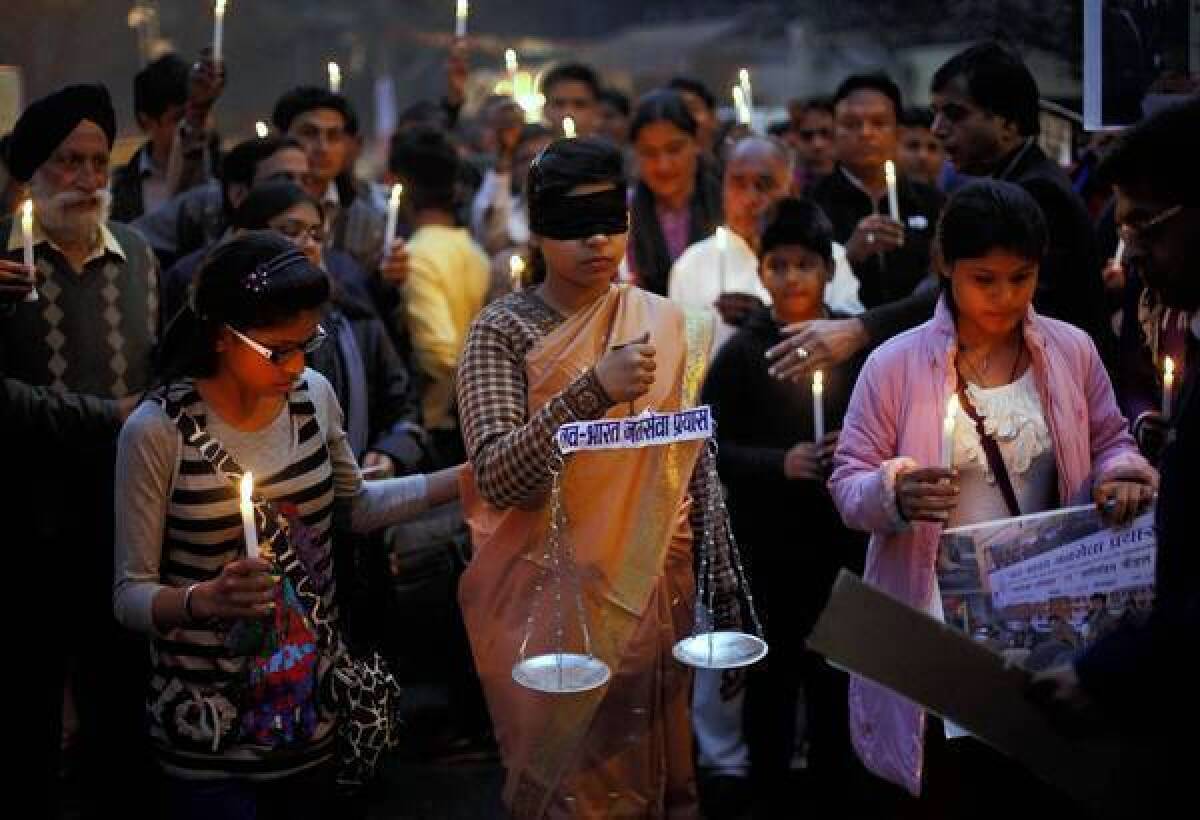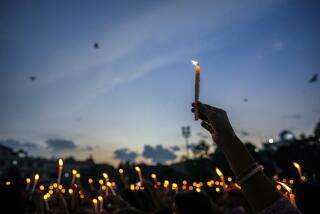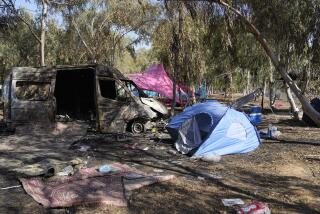India gang rape called ‘tipping point’ that set off protests

- Share via
NEW DELHI — The 23-year-old physiotherapy student was a woman with a dream. Her tuition paid from the sale of ancestral land, she studied hard, got good grades and was on track for a successful career.
The horror of her brutal rape and subsequent death — after she and a 28-year-old male friend were assaulted last month by six attackers upon boarding what they assumed was a commuter bus — has sent shock waves across India. Over the weekend, another gang rape of a bus passenger, in the northern state of Punjab, was reported, along with the arrest of six suspects.
“[It’s] made people realize it could happen to anyone,” said Pooja Chauhan, 19, a female college student recently standing at the same bus stop. “It’s made me more fearful.... I assess people more carefully, see where men are looking.”
More than 24,000 rapes were reported in India in 2011, according to the National Crime Records Bureau, the equivalent of one woman raped every 22 minutes. By some estimates, only 1 in 10 rapes is even reported to authorities.
Yet the weeks of public clamor are “not simply about rape,” said Dipankar Gupta, a sociologist and board member of the Dehradun-based Doon School. Rather, he said, “the rape was the tipping point,” a culmination of “the government’s [weak] response, the sense that the political class has alienated itself from the rest of the population, and people’s anger at the way the police and the system handled the case.”
The victim, who died Dec. 29 from injuries sustained in the attack almost two weeks earlier, epitomized the dreams of millions of Indians — to get an education, join the middle class, help build a vibrant nation — even as the case spotlights systemic problems and deep frustrations many face daily.
It’s revealed a fundamental gap, analysts say, between a country that harbors superpower aspirations but is too often held back by dusty legal and political systems, slapdash complacency and little appetite for the reforms needed to reach its potential, protect its women, even feed its own people.
Despite India’s modernizing economy of high-tech call centers, slick shopping malls and expanded female career opportunities, centuries-old traditions still hold among many that women shouldn’t be out late without a man and shouldn’t dress in jeans. Some conservative politicians and religious leaders have even blamed the victim, suggesting that she should’ve been more submissive, that women should stay home cooking and raising children.
“There’s a huge disconnect,” said Ranjana Kumari, head of New Delhi’s Center for Social Research, a think tank. “There are prescriptions for Indian women, yet here she was with a man who was himself brutalized. That’s also a message; no one is safe in society.”
Growing frustration, particularly among young people, that India’s political establishment is out of touch has been compounded by the government’s clumsy response. It took the prime minister a week to issue a statement. Authorities, meanwhile, ordered the use of batons, water cannons and tear gas against student protesters, middle-class homemakers and young professionals.
“Everyone’s had enough,” said Kulsum Khan, a thirtysomething dentist outside a Benetton clothing outlet at the mall where the victims watched a movie before the attack.
“It’s everything,” said Khan, speaking near placards commemorating the woman’s death and advertising female martial arts classes. “People have reached their limit.”
Such disenchantment is made deeper by a sense of drift. In 2004, the central government launched with great fanfare an “India Shining” campaign promising economic prosperity, superpower status and an efficient, modern economy providing global leadership in manufacturing, food production, information technology and education.
Instead, unstable coalition governments and India’s legendary bureaucracy have presided over a string of billion-dollar corruption scandals, corrosive inflation, world-class power outages and an economy still struggling to free itself from a legacy of 1970s socialism.
India’s wealth and government budgets have expanded dramatically. Yet corruption and complacency leave it ranked below many poorer African and Asian nations in hunger, healthcare, human development, environment and public safety. Former Prime Minister Rajiv Gandhi once said that just 15% of government welfare monies find their way to their intended recipients. His son Rahul, general secretary of the ruling Congress Party, put it closer to 5%.
“There are certain middle-class expectations,” Kumari said. “They don’t want to walk through garbage to school, not just literal garbage but the garbage of the system. Resentment will only grow.”
Many saw echoes of their own lives when the unnamed male victim revealed in interviews that the bus in which the couple was attacked had motored past several police checkpoints without being stopped. Nobody helped them for nearly 30 minutes after they were thrown from the bus shivering, naked and bleeding. And police officers, on arriving, bickered for 30 minutes over jurisdiction before taking them to the hospital.
“Common people feel they are alone, with no help from the government, police or authorities,” said B.P. Pandey, father of the male victim. “People are annoyed, upset, helpless and irritated and nothing changes in India. But the outpouring from ordinary people brings me some hope.”
Such frustration has been compounded by a legal system that doesn’t take crimes against women seriously, critics say, and where lawsuits can take years to adjudicate. There are currently 75,000 rape cases pending nationwide.
The brutality of the crime has also forced many to reflect on the darker side of India’s changing society. Five men have been charged with murder, rape, robbery, kidnapping, destruction of evidence and criminal conspiracy. The sixth claims he’s a juvenile in a country where records are sometimes inexact.
The house of two of the accused, alleged bus driver Ram Singh and his younger brother Mukesh, is shuttered in a slum of narrow alleys and makeshift clotheslines in south Delhi’s R.K. Puram neighborhood. The area has since attracted public wrath and bomb threats.
“It’s not our fault,” said neighbor Asha, a homemaker related to the Singhs by marriage who uses one name.
Ram and Mukesh were trouble, she said, often disrespectful of women, prone to drinking. Ram once beat up her and her husband, she added. Manohar Lal Sharma, Mukesh’s lawyer, said his client was innocent, and had been tortured by police and wouldn’t get a fair trial.
A few doors away at the house of another defendant, Vinay Sharma, who worked in a gym, three family members huddled in a one-room shanty.
“He got dragged out by his friends that night,” said his sister Manju Sharma, 14. “I’m sure he’s innocent; he’d never do such a thing.”
With public anger rising, the government announced fast-track courts for sex offenses, police sensitivity training, more bus guards, a hotline, closed-circuit TVs, more female officers and a commission to explore reforms.
But many wonder whether the case will spur change or if business as usual will prevail once the furor subsides.
“This is an inflection point,” sociologist Gupta said. “The government’s shown some mock sympathy. But politicians and police know all they have to do is sit out the agitation and await calmer days.”
Tanvi Sharma of The Times’ New Delhi bureau contributed to this report.
More to Read
Sign up for Essential California
The most important California stories and recommendations in your inbox every morning.
You may occasionally receive promotional content from the Los Angeles Times.













